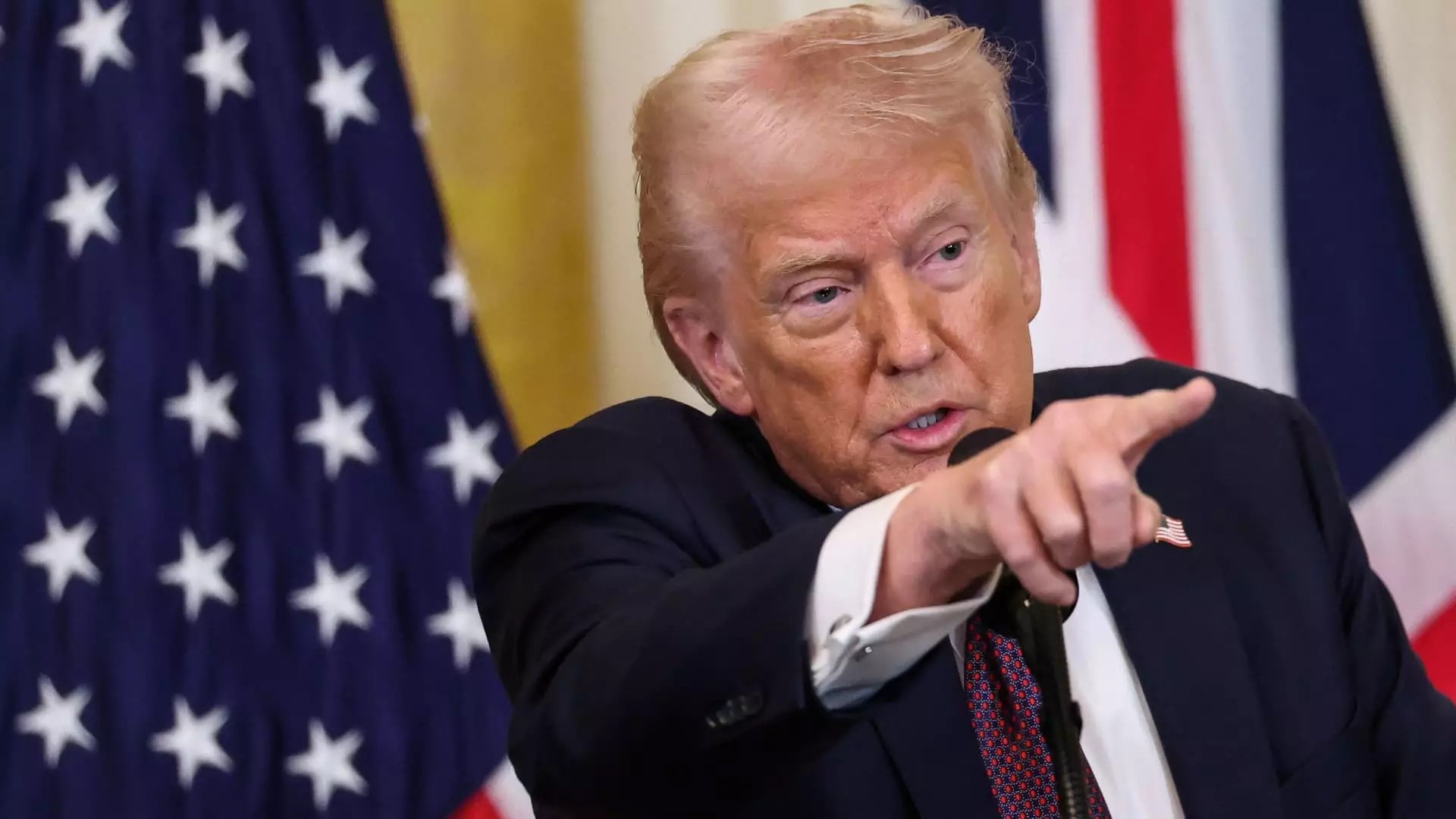In the dynamic landscape of finance, market participants have historically relied on the “Fed put,” a term denoting the Federal Reserve’s propensity to intervene in the stock market during downturns. This monetary safety net has long been champions of investor optimism, creating a baseline confidence in market stability. However, recent trends suggest that the evolving nature of fiscal policy—especially in an administration that leans heavily on both tariffs and tax cuts—has the potential to introduce a new form of protection, dubbed the “White House put.” This innovative shift in fiscal strategy raises crucial questions about the interplay between government decisions and investor assurances in the current economic climate.
The concept of the “White House put,” as articulated by analysts such as Tom Lee, suggests that fiscal measures initiated by the executive branch can be leveraged as a counterbalance to market turbulence. In essence, the government can stimulate economic activity through spending and tax incentives to cushion the stock market against unfavorable downturns. Just as the Federal Reserve lowers interest rates to counteract recessionary pressures, the government may intervene directly through fiscal stimulus to prop up investor confidence and economic growth. Lee highlights that as concerns over economic stagnation rise, specifically with the looming threat of recession, such measures become essential for maintaining market vitality.
Reflecting on recent consumer sentiment, there is palpable anxiety surrounding the current administration’s strategies. Although inflationary pressures have not fully materialized in quantitative metrics, perceptual indicators demonstrate a shift in public opinion. The bond market appears to respond, with declining yields indicating heightened fears regarding economic stability. Such trends exemplify the caution investors are exercising in light of potential downturns spurred by policies including tariffs, which could undermine growth. The recent downturn in consumer spending showcased in data from the Atlanta Fed illustrates the broader implications of these policies. A projection of a contraction of 1.5% in GDP signifies an urgent need for responsive fiscal strategies.
An intriguing aspect of the current dialogue centers around the Federal Reserve’s potential responses to the evolving market conditions and fiscal landscape. Lee posits that the Fed may adopt a more accommodating stance on interest rates, signaling an inclination to offer support to an economy that shows signs of vulnerability. By fostering an environment of lower borrowing costs, the Fed could help facilitate spending and investment, thus counteracting the influences of tariffs or other contractionary policies. This dovish outlook could meld seamlessly with a proactive approach from the White House, creating a comprehensive safety net that ensures both fiscal and monetary avenues are explored for fostering economic resilience.
Market strategist Michael Hartnett provides an intriguing perspective, suggesting that the “Trump put” might act as a psychological anchor for investors. The observation that significant support levels in the S&P 500 index could catalyze a demand for verbal support from policymakers emphasizes the delicate balance of market confidence and external influences. The notion that the index could encounter substantial resistance below the 5,783 mark—a level coinciding with moments impactful on electoral timelines—illuminates the intricate relationship between political narratives and market performance. The combination of tariff announcements and regulatory changes creates a complex backdrop ripe for investor scrutiny.
Amid these shifts, it is essential to recognize that while the administration has enacted measures to alleviate economic pressures—such as regulatory cuts and tax incentives—the reality remains that considerable uncertainty looms. The impending tariffs on vital trade partners could ultimately exacerbate investor trepidation and disrupt market dynamics. The tumultuous landscape characterized by market volatility and policy ambiguity underscores the need for vigilance in both investor actions and government responses. Moving forward, it will be pivotal for policymakers to strike a balance that fosters economic growth while shielding markets from the destabilizing effects of aggressive regulatory measures.
As we navigate these uncharted waters, understanding the intertwined fates of fiscal policy and investor confidence will be essential for anticipating the potential trajectories of the economy in the coming months.


Leave a Reply